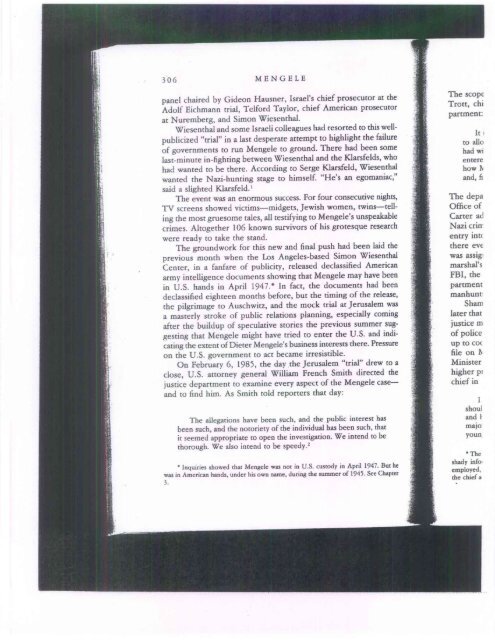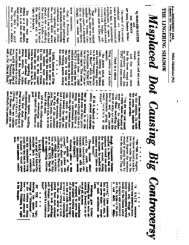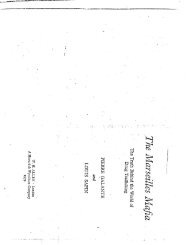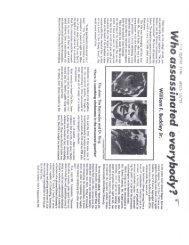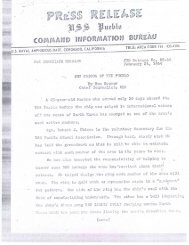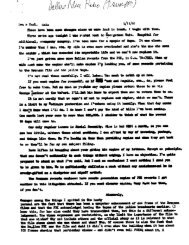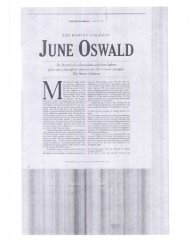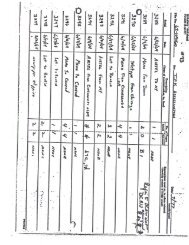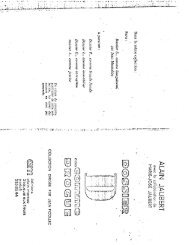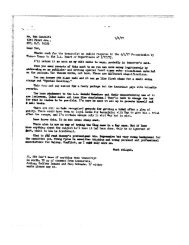MENGELE The Complete Story
MENGELE The Complete Story
MENGELE The Complete Story
You also want an ePaper? Increase the reach of your titles
YUMPU automatically turns print PDFs into web optimized ePapers that Google loves.
306 <strong>MENGELE</strong><br />
panel chaired by Gideon Hausner, Israel's chief prosecutor at the<br />
Adolf Eichmann trial, Telford Taylor, chief American prosecutor<br />
at Nuremberg, and Simon Wiesenthal.<br />
Wiesenthal and some Israeli colleagues had resorted to this wellpublicized<br />
"trial" in a last desperate attempt to highlight the failure<br />
of governments to run Mengele to ground. <strong>The</strong>re had been some<br />
last-minute in-fighting between Wiesenthal and the Klarsfelds, who<br />
had wanted to be there. According to Serge Klarsfeld, Wiesenthal<br />
wanted the Nazi-hunting stage to himself. "He's an egomaniac,"<br />
said a slighted Klarsfeld.'<br />
<strong>The</strong> event was an enormous success. For four consecutive nights,<br />
TV screens showed victims—midgets, Jewish women, twins—telling<br />
the most gruesome tales, all testifying to Mengele's unspeakable<br />
crimes. Altogether 106 known survivors of his grotesque research<br />
were ready to take the stand.<br />
<strong>The</strong> groundwork for this new and final push had been laid the<br />
previous month when the Los Angeles-based Simon Wiesenthal<br />
Center, in a fanfare of publicity, released declassified American<br />
army intelligence documents showing that Mengele may have been<br />
in U.S. hands in April 1947.* In fact, the documents had been<br />
declassified eighteen months before, but the timing of the release,<br />
the pilgrimage to Auschwitz, and the mock trial at Jerusalem was<br />
a masterly stroke of public relations planning, especially coming<br />
after the buildup of speculative stories the previous summer suggesting<br />
that Mengele might have tried to enter the U.S. and indicating<br />
the extent of Dieter Mengele's business interests there. Pressure<br />
on the U.S. government to act became irresistible.<br />
On February 6, 1985, the day the Jerusalem "trial" drew to a<br />
close, U.S. attorney general William French Smith directed the<br />
justice department to examine every aspect of the Mengele case—<br />
and to find him. As Smith told reporters that day:<br />
<strong>The</strong> allegations have been such, and the public interest has<br />
been such, and the notoriety of the individual has been such, that<br />
it seemed appropriate to open the investigation. We intend to be<br />
thorough. We also intend to be speedy.'<br />
• Inquiries showed that Mengele was not in U.S. custody in April 1947. But he<br />
was in American hands, under his own name, during the summer of 1945. See Chapter<br />
<strong>The</strong> scope<br />
Trott, chi<br />
partment:<br />
It<br />
to all()<br />
had wi<br />
entere<br />
how is<br />
and, fi<br />
<strong>The</strong> depa<br />
Office of<br />
Carter ad<br />
Nazi crier<br />
entry int(<br />
there eve<br />
was assig'<br />
marshal's<br />
FBI, the<br />
partment<br />
manhunt<br />
Sham<br />
later that<br />
justice m<br />
of police<br />
up to co(<br />
file on A<br />
Minister<br />
higher pi<br />
chief in<br />
shoul<br />
and<br />
majo<br />
youn<br />
' <strong>The</strong><br />
shady info<br />
employed.<br />
the chief a.


